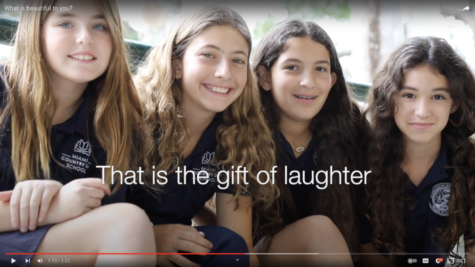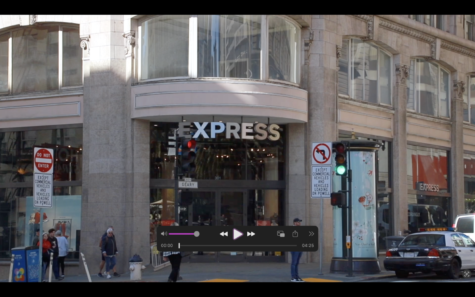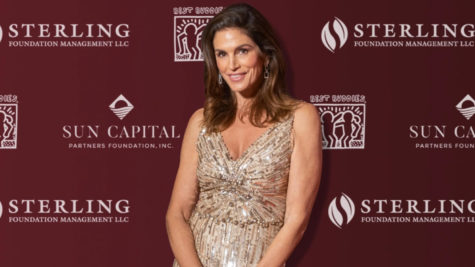Taylor Swift: Reflections on a Pop Star’s Changing Career

Although men are accused of not knowing their own weakness, yet perhaps few know their own strength. It is in men as in soils, where sometimes there is a vein of gold which the owner knows not of. –Jonathan Swift
I first remember noticing a Taylor Swift’s song while camping along the National Seashore just north of Cape Canaveral. Vanessa, Olivia, and I had driven up in our ancient Ford Coachmen camper to watch the space shuttle launch, but a cold front had rolled in, and along with it a storm that forced a delay in the countdown, so we had to wait it out inside. A pot of rice and beans steamed on the Lilliputian camper stove while the boom box–it was balanced upon the edge of the tiny bathroom sink–played the local country radio station, WWKA 92.3. I sliced the tomato for the sandwiches. Olivia scrawled pictures of whales in her thrift store copy of Tales from the Brothers Grimm. Vanessa sat on the sofa bed reading People magazine. While I applied mayonnaise to the slices of toasted rye, I could not help but think that the song, “Tim McGraw,” was not standard country fare. Later, as the rocket boosters lifted the Enterprise into space and turned night into day over Mosquito Lagoon, I thought about how Swift positioned herself within the song’s situation, how the allusion to a popular Top-40 country star instilled her vocals with a believable humility that translated into something like authority. In short, “Tim McGraw” was original, and wonderfully off kilter. When Swift sings the refrain “When you hear Tim McGraw / I hope you think of me,” we are both privy to her heartbreak while simultaneously being treated to a dose of literary intelligence. This was good songwriting.
After becoming familiar with Taylor Swift’s first album, I took notice when Fearless debuted in 2008. She wasn’t a megastar yet; the album had yet to sell 8.9 million copies (second only to Adele’s 21 in the last five years). I remember when winter break rolled around I decided to take on a home improvement project–painting the living room–and as is my want I required an extensive playlist to get me through the epic task. Pavement’s Slanted and Enchanted received a lot of playing time, as did Radiohead’s recently released In Rainbows, and after I felt I understood those two well enough I turned to the new Swift. It didn’t take long, as I pushed and pulled the paint roller, before I found myself singing along. The first song to catch my attention: “White Horse.” That evening, winding down and sipping a cold one, I posted this on my Facebook page: “Why is a 40-something man, tears welling up in his eyes, singing along to Taylor Swift’s ‘White Horse’?” “You’re a poof,” Q responded, predictably. I can’t quote word-for-word what Riff wrote on my wall, but it had something to do with me no longer possessing a certain aspect of my male anatomy. Then there came, as I tackled the ceiling the following day, my “Love Story” phase, and then one of my all-time favorite Swift songs emerged, “Fifteen.” “I think this album might be brilliant,” I told Vanessa as she boiled water for the pasta on our new gas range.
When Taylor Swift sang “When you’re 15 / and somebody tells you they love you / you’re gonna believe it,” I detected the fragile, jaded wisdom that only comes with a heart freshly broken. In the song she also alludes to a friend, “a red-headed Abigail,” and tells, in part, the story of their freshman year of high school. Here Swift’s creative act comes not only in the familiar story she tells, but also in the manner in which she extends empathy for a friend. Pop songs are rarely so specific. I spent the next week, as I admired our freshly painted living room (I did a particularly good job on the vaulted ceiling), thinking about what Swift was doing. I concluded she had not only touched my heart with her songs, but she had helped me recover what it felt like to be a teenager. More precisely, I think she helped me grasp what it might be like–as odd as this might sound—to be a teenage girl. This was a difficult imaginative leap for me. I played college football. I still benchpress over 250 pounds. Anyone who messes with my daughter is going to have to tangle with me, and, my friend, it’s going to get ugly for you real fast. Occasionally, you can find me at Big Al’s gun range in Hallandale Beach. Moby-Dick, Human vs. the Universe, Captain Ahab’s existential rage–that’s what I’m talking about! I aim my flats boat, Scout, into the heart of the Everglades backcountry. If I get lost, slip and break my leg or smash into the mangroves, I’m alligator dinner. I like to think of myself as a poet-warrior in the Classic sense. Bring it on!
So, singing along with “White Horse,” tearing up to “Fifteen,” and connecting with the desperate optimism in “Love Story” did not exactly fit my manly-man persona. Yes, of course Swift was aiming for Top 40 success with Fearless, but something in me detected her music was getting dangerously close to Art with a capital “A”–and then, as an additional layer of interest, there was this mind-boggling fact: the songs that made me so curious were penned by a girl yet to see her 18th birthday. A couple years later, I took Olivia to the Swift concert on the Speak Now tour, my daughter, I thought, a perfect cover. “How nice. That man is taking his daughter to see Taylor,” I could almost hear the girls in the ticket line thinking–but when the lights dimmed and Swift took the stage, I shamelessly fist pumped and sang along with the tweens and the teens. “Possible genius,” I texted Greg, my music-loving comrade grown dubious of my interest in this swiftly rising star.
Stepping back, I see Taylor Swift, especially on her first two albums–and occasionally on her third and considerably weaker Speak Now–had the uncanny ability to capture the experience of being a teenager while simultaneously being one. This rarely works out, as I see in the earnest but often awkward student poems and short stories turned in to me in class. Though the emotional intent in the writing is right, the work too often lacks the craftsmanship needed to create a vessel strong enough to hold what they think and feel. As a teenager, Swift emerged with the ability to create that vessel–a teenage artist with an aesthetic fully formed, a country music prodigy. In her best songs, Swift seems nostalgic about the passing of time the moment after it passes, and she captures the teenager’s yearning for adulthood and maturity perfectly. Her crushes, heartaches, and break-ups seem to unfold in real time, and her songs allow us to glimpse what seems like her true identity. She seems genuinely jealous of the cheerleaders she sings about, and she envies the popular crowd she’s too awkward to have access to. She’s not making these stories up. She seems to be, while drawing upon archetypal situations and imagery, really living them. In this way Swift gave voice to the experiences of teenage girls around the world. In doing so, she became the Everyteen Girl. She has no faith that she is worthy of the guy she has fallen in love with, and she’s devastated when, after the brief moment she had her beau’s attention, she’s rejected. She’s not an adult looking back at her teenage years and singing about them as great nostalgist songwriters like Bruce Springsteen often do, she’s a teen singing about what was happening to her while it was happening–yet she had the uncanny artistic maturity to distance herself enough from her emotions to craft her highly skilled narratives. This is incredibly difficult to accomplish, and I cannot think of a teenage songwriter (except in an almost equally novel way, Lorde) who has done it better.
But as Swift got older–if you want to call entering one’s early 20s getting older–she inevitably began to lose connection with the primal power of those adolescent emotions. We can’t really blame her. She had to move on. Those intense, hormone-fueled relationships come only once, and after the second or third break-up, you kind of figure out what’s going on. Obviously, she couldn’t keep writing those types of songs for long (though she certainly tried to on Speak Now and Red), largely because the newness of the experience of love, and the fallout from failed romances, began to become what it becomes to all of us–heartbreaking, but predictable. But what else was she supposed to write about?
Even fans began to notice and tease her for recycling her subject matter, for singing about crushes, idealized love, and, yep, her go-to, the break-up. Speak Now shows her evolving into a more confident, brassy, 20-something still lamenting her disillusionment, especially powerful in “Dear John,” which in a loosely veiled way captures her feelings about her failed romance with John Mayer. (It is also a song of revenge, something Swift likes to pen now and again.) Still, a decline in sensibility seemed in progress. “We Are Never Getting Back Together,” one of Red’s silliest songs, foreshadows weaker songwriting and diminished sensibility. Swift, we could begin to see, started to lose track of her strengths in this break-up song that seems more a concept than anything heartfelt. As she drifted farther away from country music (and farther away from the essence of country music, the cadences and soul of the blues mingled with the balladry brought to America by blue collar Scottish and Irish immigrants), she began to lose specificity in her songwriting and, as a consequence, emotional urgency. “Dear John” begins the closing of the book on her ability to both describe and elicit feelings. Red, Swift’s transition album, is mostly tiresome and predictable, aside from the standout (and U2-influenced) “All Too Well.” On Red, we see Swift looking for new influence, looking for an answer to her dead end subject matter. Turning to U2 reflects a good instinct, but one she knew she would never be able to pursue.
And then we get 1989–the album named for Swift’s birth year. Red flag.
The album from start to finish, once we melt away the appealing plastic veneer, is uninteresting. Vapid and conforming, the songwriting is bereft of the quirky originality that helped make Swift the first country-crossover star in years and Nashville’s savior. (I can see “Love Story,” Swift’s most important song, entering the Great American Songbook, but how about “Welcome to New York”?) The songwriting on the new album is full of so many problems it’s difficult to touch upon all of them, and the music–well, to be generous, I’d say it’s bouncy and punchy, perfect for a kid’s pizza party at Chucky Cheese. Every song on the 1989 is built upon a cliche. This is perhaps why the album seems so accessible upon first listen. In fact, we already know the lyrics, have heard them before we rushed to Target to buy the CD with the bonus tracks. We’ve got everything from “I can read you like a magazine,” (a lazy songwriter’s play on “I can read you like a book”), “red lips and rosy cheeks,” “wildest dreams,” “all you had to do was stay,” “held me in the palm of your hand,” “say you’ll remember me,” “silent screams” “this is how you get the girl,” “wait for ever and ever,” “salt in wounds,” “the knife in the back,” not to mention the profound “this love is good” and the truly observant “this love is bad,” all washed away by “a perfect storm.” (This is the short list. The long list can be found at my website bop_you_in_the_head_with_a_banjo_taylor_swift.com). The freshest simile she can muster is “You’re still all over me like a wine-stained dress I can’t wear anymore.” There are a lot of dresses alluded to on the album, and some are “nice” and some are “little” and some are “black,” and she does a lot of standing in them while the sun sets, and–OMG–sometimes they are even in a pile on the floor. This isn’t to say there weren’t cliches in Swift’s previous work. Sure, there were loads and loads of them. It’s just that they were generally surrounded by complexities and interesting scenarios–and the cliche-scaffolded songs on 1989 aren’t. Instead, they are propped up by supposedly 80s-inspired beats and Swift’s newly sterilized, scrubbed-clean vocals. Her once endearingly faint iced-tea-on-the-porch country twang has been irradiated.
To make matters worse, the album bombards us with repetitions which admittedly become hypnotic, but after just a few listens become as boring and repetitive as the songs’ subject matter, as in the melodramatic “Out of the Woods.” Here Swift repeats the phrase “Are we out of the woods, are we in the clear yet?” forty times. (Yes, I forced myself to count.) I guess if you repeat a cliche forty times in a 3:56 minute song you’ve done something original, but did she really have to repeat “all you had to do was stay” twenty-two times on “All You Had to Do Was Stay” and the word “I” in “I Know Places”–get ready for this—ninety-five times? Here’s the real issue. The persona Swift crafted on her previous albums–the slightly gawky, literate, sensitive, yet fiercely independent young woman we fell for–has stepped out of character. We know she can’t be the Everyteen anymore, but she has failed in her attempt to become the Every 20-Something, her new project (or, rather, habit). This is because becoming the 20-Something spokesperson might not be possible. Certain aspects of teenage life are universal, but the life of a 20-something is not, so she is unable to tap into universal experiences that can speak for all of us. To compensate for the loss of the shy and awkward (yet undeniably charismatic) girl who won us over with her vulnerability, she has transformed herself into the trophy on the cover of Maxim, the wannabe (and probably soon to be) pop icon who name drops “James Dean.” Unfortunately, she is transforming herself into another Marilyn Monroe wannabe with “red lipstick.” Swift’s lyrical persona no longer stares at her ex-boyfriend’s picture in disbelief, the teardrops falling on her guitar, thinking about burning her memories in order to drive away her intolerable sense of rejection, she’s staring in the mirror taking selfie after selfie, singing “I, I, I, I, I” to the “sick beat” a computer algorithm invented for her. Like Narcissus, she has fallen in love with herself, and she wants us to watch it happen. Her new songs have misunderstood love when once they had understood it so well.
Because she doesn’t know where to turn as a songwriter as she transitions from teenager to adult, she is now forced to write about her petty squabbles and fallings out with the likes of Katy Perry in “Bad Blood” or refer again to critics who accuse her of being empty headed, as in “Shake It Off”–material recycled from Speak Now’s more unique “Mean.” Swift now likes to initiate superficial cat fights among the stars, more fodder for the tabloid and fan blogs. We are to understand that her fragile ego has been wounded unjustly. She turns to the pop of the 80s (the most superficial musical decade since the invention of the radio) for inspiration. She borrows liberally from Toni Basil’s “Hey Mickey” to launch the tinny “Shake It Off.” Worse, the men (I should call them Ken dolls) who inhabit her songs are as unbelievable as they are boring. These aren’t the ominously realistic “senior guys” in “Fifteen” who can break a naive girl’s heart after robbing her of her virginity, they’re “new money, suit and tie” sporting “slicked back hair,” the human beings found in her early work turned into superficial caricatures with “clothes in the other room.” I don’t know which is scarier–the predatory dudes in “15” or the mannequin men in 1989. There’s nothing like love or even a spicy, believable lust conveyed in the songs on the new album. There were, of course, hints of the coming disconnect on the title song of Red, especially in one of Swift’s most stuck-up lines: “Loving you is like driving a new Maserati down a dead end street.” (I empathize with her pain about as much as I empathize with Daisy Buchanan’s in The Great Gatsby. Swift’s voice, like Daisy’s, also sounds “like money.”) I don’t believe for a second Swift feels anything approaching true emotion on the new album, and this is why she has lost the ability to pique my curiosity while I’m stirring up some grub in the camper during a thunderstorm, and she can’t break my heart while I’m painting the ceiling of the living room either. In this sense, she reminds me of Michael Jackson and his devolution–his interesting, provocative and original songs like “Billy Jean” and “Beat It” transforming into schlock like “The Lost Children.”
1989 is here today, gone today music created by a young artist who has unfortunately lost touch with the humanity the best popular art requires. She has set aside her guitar and banjo, as well as the skill required to play them, and sought the easy solution: have producers armed with synthesizers and computers make your music for you. 1989 is music made by someone who once walked the line between accessibility and artistic merit, someone taken seriously and praised by critics on 60 Minutes for her songwriting. Taylor Swift reinvented herself on 1989, but in the process she has become artificial. Worse, Swift has conformed to what is expected of a pop star. Yes, her loyal fans will love her, at least for a little while, until they get sick of this boring and repetitive album. If you want to hear some music with the authority Swift traded away, try Lorde or Lana del Rey or Katie Crutchfield. You’ll need something soon, because you’ll be tired of listening to 1989 by the end of the week.






